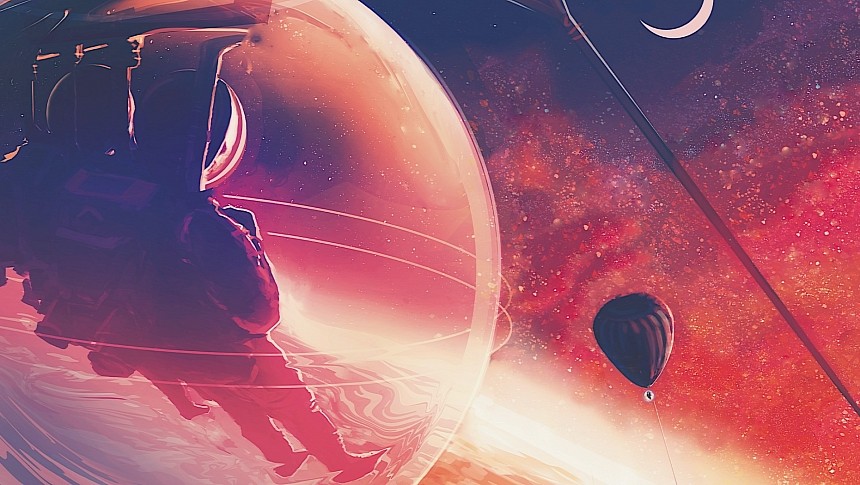We've been at it trying to unlock the secrets of our Universe for a long time now. Yet you can't deny the fact that it kind of feels only recently we've started making some progress.
At least that's the case when it comes to discovering planets far away from our own solar system. Called exoplanets, they've begun flooding the news stream in 1992, when the Poltergeist and Phobetor duo were discovered orbiting a pulsar called PSR B1257+12.
Since that time, the counter has reached 5,338 confirmed discoveries. NASA has even set up a catalog of exoplanets listing all of them. As of this week, we'll try and get a closer look here on autoevolution at some of the most important or impressive ones. And we'll start with a planet called Janssen.
The planet's official name is 55 Cancri e. We call it Janssen because that's the winning name that surfaced at the end of the International Astronomical Union's (IAU) naming competition years ago.
The planet was discovered in 2004 by a team of astronomers. It's located just 41 light years from Earth, and it orbits a star called Copernicus in the constellation of Cancer. That star is a G-type, the same as our own Sun.
Janssen is a mammoth planet, a so-called Super Earth. It has a mass eight times larger than our planet's, crammed into a radius just 1.8 times larger. Despite its dimensions, it's pretty close to its star (just 0.0154 astronomical units), and spins around it so fast it only needs 18 hours to complete a full orbit.
Being so far away from us means we don't have a full picture of the place yet. We do know however that the close proximity to the star (65 times closer than Earth is to the Sun) makes it unsuitable for life as we know it to develop. NASA even speculates the planet's surface is molten, making it even more unlikely for life to develop. And the molten stuff, lava in fact, is so hot chances are it's thin like water.
The planet's atmosphere is believed to contain silicates. Given how Janssen is tidally locked with its star, meaning one side is always lit and the other always in the dark, silicates condense into clouds on the night side, and they sparkle as they reflect the seas of lava below.
As a twist, Janssen is not alone in its solar system. There is data pointing to a sister planet further out called Galileo. Aside from that, four other planets are believed to be part of the system.
Like it does with other important exoplanets, NASA offers a so-called guided tour of the place, and the experience is open to anyone. Enjoy the trip!
Since that time, the counter has reached 5,338 confirmed discoveries. NASA has even set up a catalog of exoplanets listing all of them. As of this week, we'll try and get a closer look here on autoevolution at some of the most important or impressive ones. And we'll start with a planet called Janssen.
The planet's official name is 55 Cancri e. We call it Janssen because that's the winning name that surfaced at the end of the International Astronomical Union's (IAU) naming competition years ago.
The planet was discovered in 2004 by a team of astronomers. It's located just 41 light years from Earth, and it orbits a star called Copernicus in the constellation of Cancer. That star is a G-type, the same as our own Sun.
Janssen is a mammoth planet, a so-called Super Earth. It has a mass eight times larger than our planet's, crammed into a radius just 1.8 times larger. Despite its dimensions, it's pretty close to its star (just 0.0154 astronomical units), and spins around it so fast it only needs 18 hours to complete a full orbit.
Being so far away from us means we don't have a full picture of the place yet. We do know however that the close proximity to the star (65 times closer than Earth is to the Sun) makes it unsuitable for life as we know it to develop. NASA even speculates the planet's surface is molten, making it even more unlikely for life to develop. And the molten stuff, lava in fact, is so hot chances are it's thin like water.
The planet's atmosphere is believed to contain silicates. Given how Janssen is tidally locked with its star, meaning one side is always lit and the other always in the dark, silicates condense into clouds on the night side, and they sparkle as they reflect the seas of lava below.
As a twist, Janssen is not alone in its solar system. There is data pointing to a sister planet further out called Galileo. Aside from that, four other planets are believed to be part of the system.
Like it does with other important exoplanets, NASA offers a so-called guided tour of the place, and the experience is open to anyone. Enjoy the trip!









